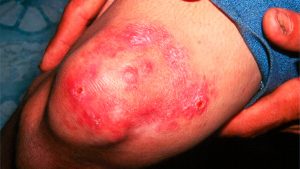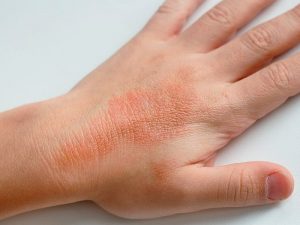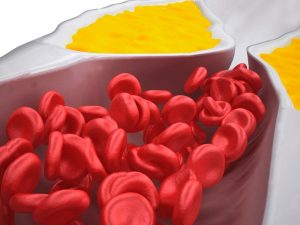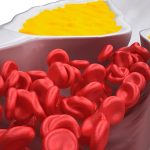What is Spirulina?
What comes to mind when you think of a superfood? Is it algae? The answer is probably no, but, believe it or not, spirulina or Arthrospira (made from blue-green algae in salty lakes and oceans) is on the superfoods list. This nutrient-rich substance comes in the form of a green powder and provides numerous health benefits. Spirulina contains iron, protein, manganese, potassium, carbohydrate, vitamins, magnesium, omega-6, and omega-3 fatty acids. The algae has no cellulose cell walls, which makes it easy to digest. The product moved into the mainstream after it was used as a dietary supplement by NASA astronauts on space missions.
The Benefits
Research has shown that consuming this superfood can aid in maintaining nutritional fitness and fight malnutrition as well as communicable diseases.
- Malnutrition: The World Health Organization (WHO) reports that malnutrition is one of the largest contributors to child mortality. Field trials from a Swiss research foundation found that children with mild to moderate malnutrition recovered with a daily dose of one to three grams of spirulina over four to six weeks. The algae contains 1 gram of fat per tablespoon and has a protein value comparable to eggs.
- Nutritional fitness: Spirulina is very nutritious and can help maintain essential nutrients needed in the body. It contains more iron than raw spinach and more beta-carotene than carrots. A tablespoon a day can fulfill your beta-carotene quota, to promote healthy eyes and skin. Spirulina is a great source of B vitamins and iron for your immune system and metabolism.
- Communicable diseases: One of the many ways this food is a superfood is that it can modulate immune functions and inhibit the release of histamine with its anti-inflammatory properties. Histamines are the substances that cause allergy symptoms such as a runny nose, itchy eyes, hives and swelling. Studies have shown that spirulina has potential anticancer, antiviral and antiallergic effects.
- Chronic fatigue: Constituents found in spirulina such as polysaccharides (rhamnose and glycogen) and essential fat are easily absorbed into the body to help release energy. Spirulina also increases healthy lactobacillus in the intestine, which enables vitamin B6 production (another energy-releasing property).
- Cholesterol-lowering effects: A recent study of ischemic heart disease patients taking spirulina treatments showed a significant decrease in their blood cholesterol, triglycerides and LDL cholesterol.
- Diabetes: In a type 2 diabetes study, patients received spirulina supplements for two months to determine the pre-intervention and post-intervention on their blood glucose levels. The results showed a substantial decrease in fasting blood glucose and postprandial blood glucose levels, as well as an improvement in long-term glucose regulation.
Possible Risks
The risk of eating algae comes not from the plant itself but what it absorbs. Spirulina brings in minerals from its surrounding environment, and this means any toxic substances can be absorbed by the algae. So what are the risks?
- Cell health: If you take spirulina supplements they could harm your cells. One study found that these products can contain cytotoxins (substances that destroy the cell membrane).
- Heavy metals: One substance that could be absorbed by algae is heavy metal such as mercury or lead. If spirulina is grown in an area with a high concentration of these metals, there is a high risk of passing them on to consumers. This risk has decreased substantially since the 1980s and manufactures are much more cautious. However, it is important to always buy from a trusted source.
- Microcystins: Microcystins are toxins that are produced by blue-green algae (cyanobacteria). These toxins can last from weeks to months. While they are not regulated by the United States Environmental Protection Agency (USEPA) in drinking water, they are on the Contaminant Candidate Lists (CCLs) 1 and 2.
- Gout and kidney stones: Spirulina holds a substantial amount of nucleic acids, which when metabolized produce uric acid. An overabundance of uric acid in the body can develop into kidney stones or gout. Those who are at high risk for these conditions should talk to their healthcare professional before taking.
Spirulina and Pregnancy
Pregnant women need numerous nutrients for a healthy pregnancy and while many of these exist in spirulina, there are risks. High-quality spirulina is usually free of potentially harmful substances and metals, but it is important to talk to your doctor first. Studies on pregnant rats showed no negative results, but not enough is known about the effects on human women. The U.S National Institute of Health recommends avoiding spirulina during pregnancy and breastfeeding.
How to Consume Spirulina
One to two tablespoons a day of spirulina powder is a sufficient. It can be added to several different meals. The Cleveland Clinic suggests:
- Blending it into a smoothie.
- Blending it into hummus.
- Mixing it with
- Mixing it with
- Drinking it as a shot.
Quality Assurance
For your own health and safety you should always check the source of spirulina before buying. Even when buying from a reputable buyer it never hurts to double check the quality of the product. Here are some simple ways to make sure your algae is in the proper condition for consumption.
- The taste: Spirulina should not be strong or overpowering. The algae is mostly tasteless but might have a slight bitterness to it. If your powder is too fishy, salty or bitter, it could indicate it was grown in an unsanitary environment.
- The smell: Most spirulina comes from the ocean and therefore will have a slight ocean fragrance. If the aroma is overpowering with a distinct fishy smell, it could indicate a high bacteria count. This is a sign of poor quality.
- The look: Underneath a microscope spirulina looks like spirals, but to the human eye it is, naturally, a blue-green pigment. After it is dried, the algae will become a dark forest-green The darker the green, the higher the quality as it indicates a high level of phycocyanin and other nutritional content.











